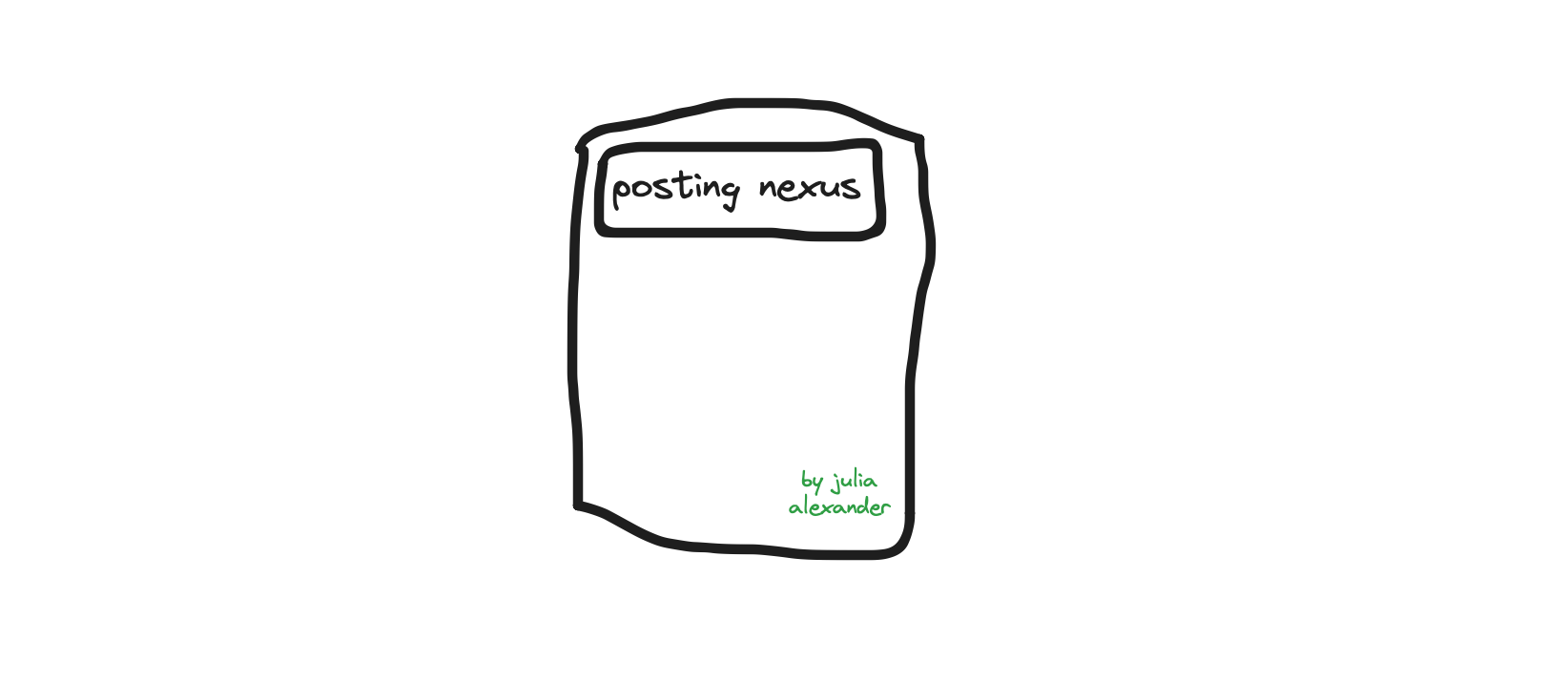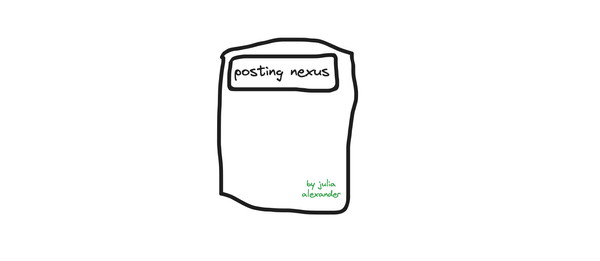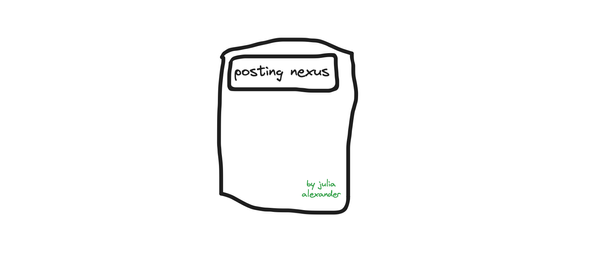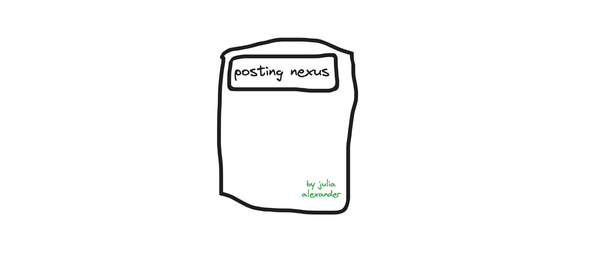Buy, Pose, Post: a semi-triumphant return of physical media

Almost everything you interact with is designed to interrupt your day. This is what the battle for attention boils down to: how long can someone or something interrupt you? Take a gander at your Screen Time usage, a feature literally created to quantify those periods of interruption. My most recent Screen Time shows Instagram as my most used app, followed by the New York Times, X, Messages, Netflix, Spotify, and Gmail. All of these little digital breadcrumbs tell me something interesting about what was able to interrupt my day for an average of five hours and 35 minutes. I sleep for eight hours, I work for eight hours, and more than 65% of the remaining eight hours is spent on unintentional and habitual interruptions.
Each interruption attempts to solve for a different imagined situation. Instagram and Twitter speak to interruption for boredom. The New York Times suggests interruption for learning. Netflix and Spotify demand interruption for entertainment, while Messages encourages interruption for socialization. Not all interruptions are weighted equally. I welcome texts from friends more than I value a push notification from the random brand I shopped at once. If the interruptions work well enough, they form habits. Even when you’re not being interrupted (push notification from TikTok), you’re seeking out interruption (purposely seeking out TikTok). How does that alter how we respond to interruptions throughout the day and, more to the point, how does that alter how companies design our days?
Some quick stats on push notifications before we get into the nitty gritty. Engagement boosts within apps by 88% when push notifications are deployed, and returning users increases by 65%, according to a 2023 Invesp study. Android developers have started to see stronger conversion rates via push notifications compared to Apple developers, even though Apple commands about 58% of the U.S. mobile market, according to data firm MoEngage. Media and entertainment see stronger conversion from personalized push notifications (7.8% versus 7% in Q3 2023) compared to eCommerce, which saw an increase in broader theme push notifications (7.5% compared to 5.7%), according to eMarketer. The average person in the U.S. receives close to 50 push notifications per day, according to Business of Apps. That’s an increase of 284% compared to 2015.
We used to seek out content. Now content seeks us out. This is defined by the digital interruptions in our life.
Despite this, however, every data point we have suggests that younger generations are revolting against the intrusive reality. People have pushed back against the unneeded intrusiveness practically since push notifications started appearing on phones back in 2010 and 2011. Nearly 80% of Millennials in a 2019 study suggested they’d delete an app because of too many annoying push notifications. Gen Z is the “Do Not Disturb” generation, leaving their devices in focus mode to forcibly silence their digital appendage.
My favorite slow-moving-and-then-suddenly-all-at-once development is how this has changed how we control the attention we give. If we can’t control the digital interruptions in our life, we physically avoid them. Here are some recent headlines:
- “No Joke: The Onion Thinks The Future of Media is Print” — New York Times
- “Print book sales rose by 5% in May” — Book Publishers Weekly
- “In our vinyl era? Physical music sales continues to grow” — ABC
- “Diaries market size is $1.3B USD, will grow at CAGR of 4.3% between 2023 and 2030” — Decipher Market Research
I’m not a luddite arguing that the digital apocalypse is on the horizon, with every citizen of Earth hurling their phones into the ocean to return to a time of proper supper times and late night brandies in the drawing room. But I do believe the return to physical media simultaneously stems from digital frustrations and digital pressures: it allows for total elimination of uncontrolled digital interruption and, just as important, it allows for those pleasures (attention spent with a book or record) to be transformed into content (attention received for posting about those physical pleasures). Eliminating the unwanted interruption allows for wanted ones.
This idea of physical participation for digital reward is hardly new, and I got into it a little in my blog about people taking photos and recording small snippets of the screen at movie theaters:
Think of fandom participation as a hierarchy. The royal we is replaced by the royal me. How does this input (energy, time, and cost) and output (attention, and acceptance) benefit me long-term? If I post a video of being at a Taylor Swift concert, and watch that follower count skyrocket overnight, how does that incentivize my future actions to further participate? And how does that compare to Instagramming a screenshot of a Swift song I’m listening to on Spotify? Both are acts of using fandom to communicate identity, but the former is defined by some level of scarcity, dedication, and action. The latter is defined by passivity. How does my own social growth affect what fandom activities I choose to participate in and which ones I don’t?
People aren’t buying books or splurging on records purely for the aesthetic vibes. Our search for some kind of permanence in a hyper ephemeral age means that materialism is often the last remaining vessel. Consider that consumer spending on leisure and goods that belong to leisure increased from 9.5% of total consumer spending in the United States in 2013 to 13% in 2022, according to the U.S. Department of Commerce. Travel spending is clearly part of this with a 71% increase in spend between 2013 and 2022, according to a study from Visa, but spending on recreational goods including TV viewing, books, and gaming has grown by 165% in the same period.
The internet certainly has an impact here, both digitally and socially. Time spent with social games like Roblox has increased to nearly six billion hours of engagement each month since it launched in 2007, for example. But digital communities have also formed around the celebration of physical goods as a provable extension of their identity. Take BookTok, which is a continuation of BookTube but for slightly different generations. Social media (text-based) turning into social video means that presentation of persona is more important than ever to find acceptance. If you’re going to talk about a book you read and want to gain the attention of others, you’re going to likely have a copy of the physical book. We’re more drawn to it than we are someone holding a Kindle. Books on shelves help complete the aesthetic that signals to others “we would likely get along.”
Critically, however, this is not the end goal from the initial purchase. The person making the video enjoyed reading in the first place. That part of their identity has not changed. What has changed is how they share that identity and find connection in a social video world instead of having those needs met through physical connections.
We’re not hanging out with people as much as we used to — 30% of U.S. adults report feeling lonely at least once a week, with 10% saying they experience it daily, according to the American Psychiatric Association. This increased amongst people in the ever important 18-34 year-old bracket, where feelings of daily loneliness sat at 30%. Nearly a quarter of adults polled said they were lonelier than pre-pandemic times and, while technology was viewed as mostly positive in “helping me form new relationships” (66%) or “helping me connect with other more frequently” (a whopping 75%), more than half of respondents didn’t know if those relationships were meaningful. Perhaps my favorite statistic that, for me, reinforces the decline in shared spaces as a direct result of the internet is that the number of malls in America has decreased by 98% between the ‘80s and 2020s.
It’s a catch-22. We use the internet for connection, but we’re overwhelmed by the daily interruptions. We’re spending time offline to focus on our passions and hobbies, but turning those passions and hobbies into digital content fodder to help establish connections that we can’t even determine are meaningful. We are searching for some form of permanence in an impermanent world; we are starved for actual connection while chasing fleeting attention.
We used to seek out content. Now content seeks us out.
Being offline for longer bursts of time — something that every new age guru with a podcast suggests — and sitting with something tangible like a book accomplishes two important mental feats: it silences the incessant buzz of corporate mosquitos begging for your attention, and it allows us to physically sit with the things we love that we feel make up a part of us. The Onion’s newspaper is for fans who are willing to spend $5 for access to digital goods but want to celebrate this thing they love by keeping a copy on their coffee table. Anyone who loves reading will tell you that few things bring as much serenity as finishing a book and finding a place for it on the shelf. I don’t have to tell you about the warmth of a record being played. When your focus is purely on that physical expression of leisurely joy, the buzz silences. Even for a moment.
I don’t expect that to disappear. The next wave of the internet is still being figured out. VR, generative AI, the metaverse. All of these things that companies are spending hundreds of billions of dollars on may happen. They may not. I can’t predict it one way or another. But as that vibrations become even more incessant, as the things begging for attention continue to grow, and as the value we place on where our time is spent becomes much more intentional, so will the physical goods we cherish. They’ll likely be from smaller companies and much more targeted to our hyper specific passions to help us share those interests with hyper specific niches on the internet, but physical media will play a vital role in our lives. Even if, part of the reason we love those objects, is to help us connect with total strangers online.
One thing Ready Player One got wrong (and oh boy are there many things) is that kids don’t want to just hang out in a virtual world with Super Mario and Pikachu. They want to take stuffed plushies to bed and play with them in the sandbox with friends at the local park. The more digital we become, the more important physicality will grow.




